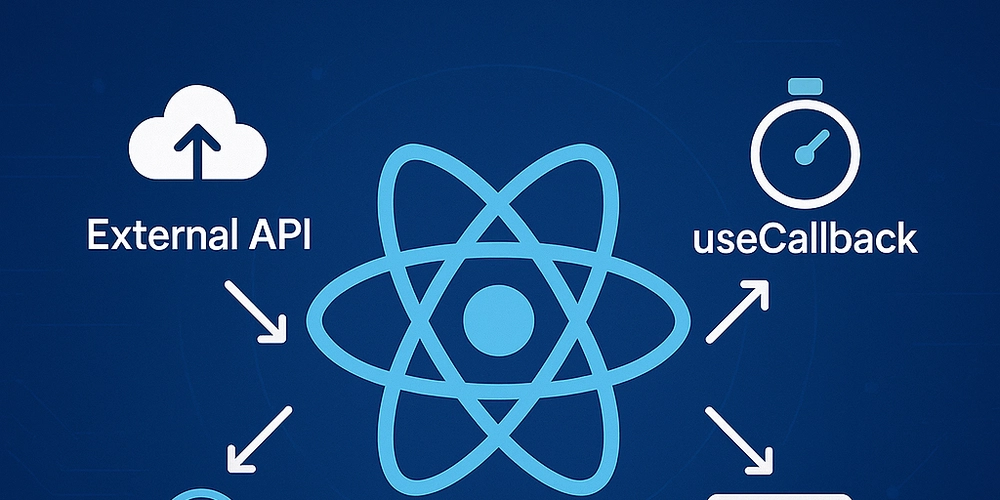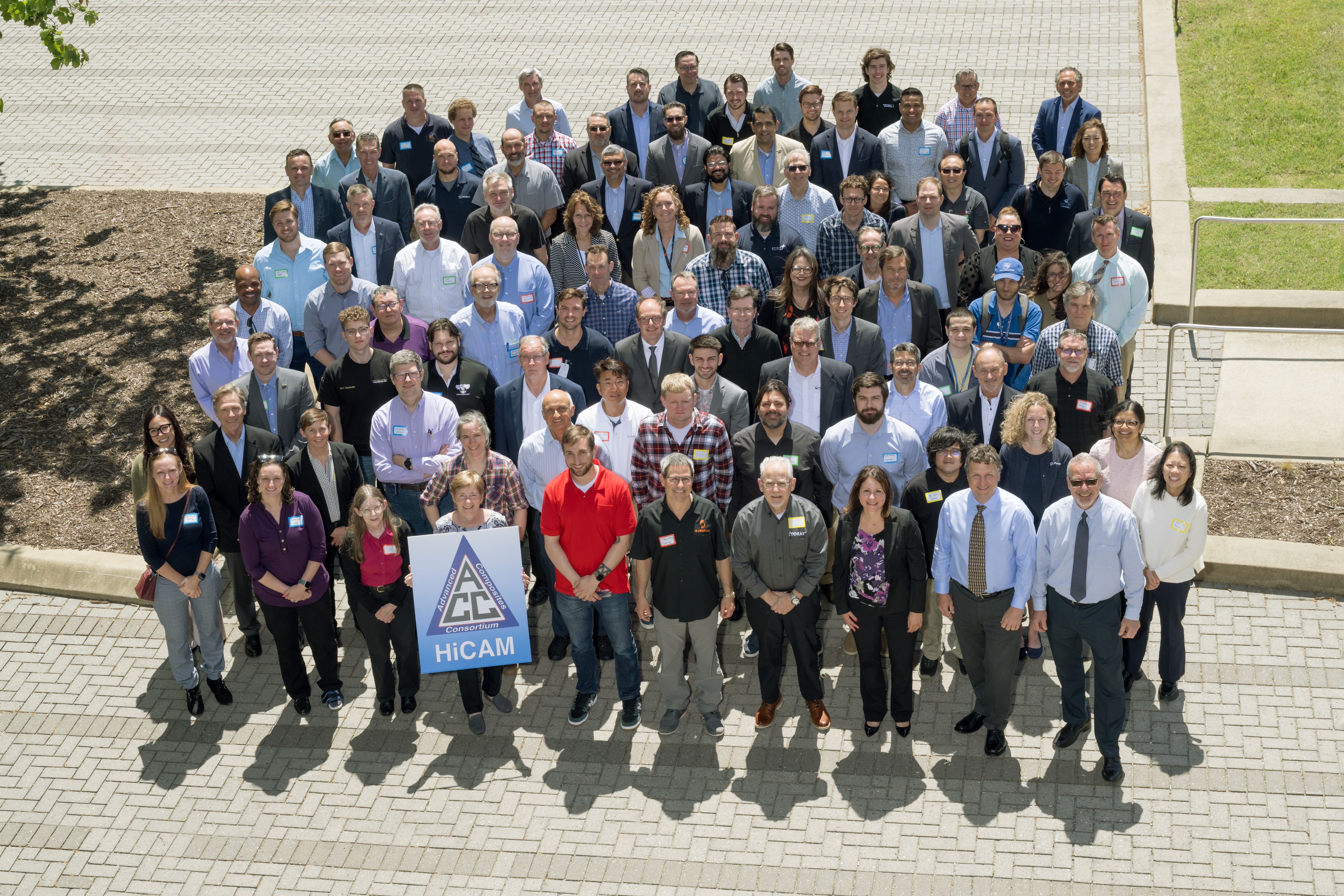The Step-by-Step Roadmap to Doubling Your Organic Traffic and Converting Visitors into Paying Customers
Learn how to double your organic traffic and convert visitors into paying customers with this clear, step-by-step roadmap and proven tactics.

Did you know that a significant majority—some reports indicate upwards of 70%—of online experiences begin with a search engine? For most businesses, that represents an almost inexhaustible well of potential organic traffic. Yet, many struggle not only to attract enough of the right visitors but also to translate that attention into actual revenue.
Moving from sporadic site visits to consistent, engaged customers feels like navigating a labyrinth without a guide. The goal is straightforward: exponential growth in relevant visitors and a significant uplift in conversion rates. The path requires diligence, strategic thinking, and continuous adaptation.
This isn't merely about gaming algorithms; it's about building a durable online presence that serves and resonates with your ideal customer base, compelling them towards valuable actions. Partnering with an experienced SEO agency in Miami can provide the expertise and local market insight needed to craft a step-by-step roadmap for doubling your organic traffic and converting visitors into paying customers. This involves multiple synchronized efforts, weaving together technical acumen, content prowess, user experience focus, and astute analytical interpretation.
The Foundation: Understanding Your Digital Territory
Before embarking on any growth initiative, a clear, almost forensic understanding of your current digital footprint and competitive landscape is paramount. Haphazard actions yield, at best, transient gains. A truly transformative roadmap starts with profound introspection and diligent market reconnaissance.
Audience Identification and Intent Delineation
Knowing who you want to reach is the first principle. This goes far beyond simple demographics.
- Develop Rich Buyer Personas: Create detailed profiles of your ideal customers. What are their challenges, goals, pain points, and—critically—what problems are they trying to solve when they use search engines? These personas serve as your compass, guiding keyword research and content creation.
- Map the Buyer's Journey: Understand the different stages a potential customer moves through, from initial awareness (problem identification) to consideration (exploring solutions) to decision (choosing a provider). The content and keywords relevant at each stage are distinct. Trying to sell high-ticket software to someone just asking "what is ERP?" is Sisyphean; providing informational content is appropriate.
Understanding user intent—what someone truly wants when they type a query into Google—is a cornerstone. Are they looking for information (navigational, informational), trying to buy something (transactional), or looking for a specific website (navigational)? Matching your content and landing pages to this intent is non-negotiable for both driving traffic and fostering conversions.
Comprehensive Keyword Research and Landscape Analysis
Keywords are the language connecting users to your solution. Astute keyword research reveals the queries potential customers are actually using.
- Go Beyond Obvious Head Terms: While high-volume terms seem attractive, they are often fiercely competitive and may indicate broad, low-intent queries. Focus on mid-tail and especially long-tail keywords (phrases of three or more words). These often reveal specific needs and have higher conversion potential. For instance, instead of "shoes," target "comfortable walking shoes for plantar fasciitis."
- Analyze Competitor Keyword Strategies: What keywords are your direct competitors ranking for? What terms are sending them the most organic traffic? Tools exist to glean this data, offering invaluable insights into overlooked opportunities.
- Understand Keyword Difficulty and Search Volume: Balance the potential traffic a keyword can bring (volume) against the effort required to rank for it (difficulty). Target a mix, prioritizing some higher-difficulty terms for long-term growth and lower-difficulty, higher-intent terms for quicker wins.
- Map Keywords to the Buyer's Journey: Categorize keywords by the stage of the buyer journey they represent. Informational keywords get blog posts or guides; transactional keywords get product pages or service pages. This mapping is indispensable for connecting traffic intent with conversion opportunities.
Table: Keyword Type vs. User Intent and Content Relevance
| Keyword Type | Primary User Intent | Examples | Ideal Content Formats | Conversion Potential |
|---|---|---|---|---|
| Informational | Learning, problem identification | How to fix... | Blog posts, guides, tutorials, videos | Low (Top of Funnel) |
| Navigational | Finding specific entity | [Brand Name] login | Homepage, contact page, login page | N/A |
| Commercial Investigation | Comparing, researching options | Best CRM software 2025 | Comparison articles, reviews, category pages | Medium |
| Transactional | Ready to purchase | Buy [Product Name] online | Product pages, service pages, pricing pages | High (Bottom of Funnel) |
Harnessing keyword research effectively sets the stage for attracting the right visitors – those genuinely interested in what you offer. Without this foundational step, subsequent efforts risk being misdirected and ultimately ineffectual.
Paving the Road: Technical and On-Page Mastery
Your website's infrastructure and the content residing upon it form the bedrock of SEO. Even the most brilliant content will falter if technical glitches impede search engine crawlers or alienate human visitors.
Robust Site Architecture and Performance
A well-structured website is intuitive for users and easily navigable for search engine bots.
- Logical Hierarchy: Organize your content in a clear, hierarchical structure. The homepage links to main categories, which link to subcategories and individual pages. This 'siloing' helps establish topic authority and aids crawl depth.
- Mobile-First Indexing: As of 2025, this is old news, but ensuring your mobile experience is not merely functional but exceptional remains critical. Google predominantly uses the mobile version of your site for indexing and ranking. Speed, ease of navigation, and content accessibility on mobile are paramount.
- Core Web Vitals: These user-experience metrics (loading, interactivity, visual stability) are confirmed ranking factors. Slow loading times or jumpy layouts frustrate users and signal poor quality to search engines. Ameliorating technical debt and prioritizing site speed using compression, caching, and optimized media are non-negotiable parts of The Step-by-Step Roadmap to Doubling Your Organic Traffic and Converting Visitors into Paying Customers.
- Crawlability and Indexability: Ensure search engines can access and understand all the relevant pages on your site. Use an XML sitemap, manage robots.txt effectively, and fix crawl errors reported in Google Search Console. I distinctly recall working with a client whose brilliant guide wasn't being indexed because a misplaced 'noindex' tag lurked in the code; a small fix with a profound impact on their organic traffic.
Compelling and Optimized Content Creation
Content is king, but only if it's discoverable and serves its audience.
- E-E-A-T Principles (Experience, Expertise, Authoritativeness, Trustworthiness): This is the foundation for high-quality content in Google's eyes, particularly for YMYL (Your Money Your Life) topics. Does your content demonstrate genuine experience, deep expertise, is the author or source authoritative, and is the overall site trustworthy? This paradigm profoundly impacts rankings.
- Strategic On-Page Optimization: This involves optimizing elements on each page for target keywords:
- Crafting engaging Title Tags and Meta Descriptions that encourage clicks from the search results page (SERP).
- Using H1 tags for the main title and H2/H3 tags for subheadings to structure content logically.
- Naturally integrating primary and related keywords throughout the content, especially in the introduction, headings, and conclusion. Avoid keyword stuffing – it's anathema to modern SEO and readability.
- Optimizing images with descriptive alt text (important for accessibility and image search).
- Ensuring internal linking points from high-authority pages to newer or less prominent relevant pages.
- Content Freshness and Depth: Periodically update existing high-performing content to ensure its accuracy and relevance. For important topics, aim for comprehensive 'pillar' content that covers a subject extensively, then link to related, more specific 'cluster' content.
Implementing Structured Data (Schema Markup)
Implementing schema markup provides search engines with explicit data about your page's content (e.g., is it a recipe, a product, an event, an article?). This doesn't directly improve rankings, but it can lead to rich snippets (enhanced SERP listings), making your result stand out and potentially increasing click-through rates (CTR) – a positive signal for SEO. It's an often-underutilised but potent tool in The Step-by-Step Roadmap to Doubling Your Organic Traffic and Converting Visitors into Paying Customers.
Accelerating Growth: Off-Page Strategies
While you control your website, factors outside your domain significantly influence its authority and perceived relevance. Off-page SEO centers on building credibility and visibility across the web.
Strategic Link Building (The SEO Cornerstone)
Backlinks from other reputable websites act as 'votes of confidence,' signaling to search engines that your content is valuable and trustworthy. However, the nature and source of links matter immensely.
- Prioritize Quality Over Quantity: A single link from an authoritative, relevant site is infinitely more valuable than dozens from spammy, low-quality directories.
- Earn Natural Backlinks: Create exceptional, link-worthy content that others want to cite and share. Original research, comprehensive guides, insightful data, and compelling visuals are inherently linkable assets.
- Build Relationships: Network within your industry. Genuine relationships can lead to legitimate backlink opportunities (guest posting, collaborations, resource mentions).
- Strategic Guest Posting: Contribute high-quality, unique content to relevant, authoritative websites in your niche. This builds your brand authority and provides valuable backlinks.
- Monitor Your Backlink Profile: Regularly review who is linking to you. Disavow links from spammy or irrelevant sites to protect your site's reputation.
From my vantage point, one common pitfall I observe is fixating on questionable link schemes. While they might offer short-term boosts, the long-term damage from search engine penalties is almost insurmountable. Patience and an ethical approach to link acquisition pay dividends within The Step-by-Step Roadmap to Doubling Your Organic Traffic and Converting Visitors into Paying Customers.
Social Promotion and Brand Amplification
While social signals aren't direct ranking factors in the same vein as backlinks, a strong, engaged presence on social media and mentions of your brand across the web contribute to overall authority and can drive referral traffic that might ultimately convert. Social shares also increase the visibility of your content, increasing the likelihood of it being discovered and linked to by others. It builds brand recognition, which can lead to more navigational searches – a direct form of organic traffic.
Nailing Conversion: From Visitors to Customers
Doubling organic traffic is a magnificent feat, but if those visitors don't turn into paying customers, the exercise is academic. This is where Conversion Rate Optimization (CRO) converges with SEO, creating a powerful synergy.
Understanding Conversion Rate Optimization (CRO)
CRO is the systematic process of increasing the percentage of website visitors who take a desired action—be that filling out a form, making a purchase, or subscribing to a newsletter. It’s not just about button colours; it’s about understanding user behaviour and psychology.
- The Symbiotic Link: Higher organic traffic provides more data for CRO. Conversely, improving conversion rates makes your traffic more valuable, bolstering the ROI of your SEO efforts.
- Identifying Conversion Hurdles: Analyze user flow, look at heatmaps and session recordings, conduct user testing, and analyze form abandonment rates to pinpoint where users drop off or encounter difficulties on the path to conversion.
Designing High-Converting Landing Pages
Landing pages are purpose-built for conversions, directly correlating to the transactional or commercial investigation keywords identified during keyword research.
- Clarity is King: The value proposition must be immediately apparent. Users should understand what the page offers and why it matters within seconds.
- Compelling Copy and Visuals: Write persuasive copy focusing on benefits, not just features. Use high-quality images or videos that support the message.
- Clear Calls-to-Action (CTAs): Your primary conversion goal needs a prominent, unambiguous CTA button. Use action-oriented language (e.g., "Get Your Free Trial," "Shop Now," "Download the Report"). Ensure supporting CTAs don't detract from the primary goal.
- Minimize Distractions: Remove unnecessary navigation links, excessive options, or cluttered design elements that divert users from the desired action. Focus the user's attention singularly on the conversion task.
- Social Proof: Include testimonials, case studies, trust badges, or reviews to build confidence and mitigate risk for potential customers.
- Mobile Optimization for Conversion: A cumbersome mobile conversion experience will tank your rates. Forms should be easy to fill out on touch devices, buttons should be tap-friendly, and pages should load quickly.
Building landing pages tailored specifically to the intent behind your high-intent keyword research is a direct method in The Step-by-Step Roadmap to Doubling Your Organic Traffic and Converting Visitors into Paying Customers. It ensures the visitor arriving via a targeted search query finds exactly what they were looking for, presented in a way that encourages the next step.
A/B Testing and Personalization
Conversion Rate Optimization is an iterative process. You hypothesise potential improvements and test them scientifically.
- A/B Testing: Test variations of your page elements (headlines, CTAs, layouts, form fields) against the original to see which version performs better regarding conversion rate. Tools like Google Optimize (check 2025 status/alternatives as Google shifts products), Optimizely, or VWO are indispensable here.
- Personalization: Where feasible, tailor the content and offers on landing pages based on user data, referral source (e.g., arriving from a specific ad or blog post), or their behaviour on your site. A visitor arriving from a blog post about "budget project management software" might see a landing page variant emphasizing cost-effectiveness compared to someone arriving from "enterprise project management features." This tailoring significantly ameliorates the conversion journey.
"The singular focus on generating traffic without commensurate attention to converting it is like filling a leaky bucket. Both strategies are inextricably linked for true business growth." — [Experienced Digital Strategist] This perspective highlights a fundamental truth: neglecting one pillar weakens the other. CRO makes your earned organic traffic valuable; robust SEO provides the volume and quality needed to fuel effective CRO.
Maintaining Momentum: Measurement and Adaptation
SEO and CRO are not set-it-and-forget-it propositions. The digital landscape is fluid, search algorithms evolve, user behaviour shifts, and competitors innovate. Continuous measurement, analysis, and adaptation are required to sustain and build upon initial growth.
Tracking Progress with Granular Analytics
Setting up and correctly interpreting website analytics is foundational to understanding performance and identifying areas for improvement.
- Essential KPIs: Focus on metrics beyond just traffic volume. Key performance indicators include:
- Organic Search Sessions/Users: Raw traffic volume.
- Conversion Rate: Percentage of organic visitors who complete a goal.
- Goal Completions/Transactions: The number of times desired actions are taken.
- Bounce Rate: Percentage of visitors who leave after viewing only one page. High bounce rates on key pages can signal issues.
- Average Session Duration: How long users spend on your site.
- Page Value: If e-commerce, the average revenue generated per pageview.
- Assisted Conversions: How organic traffic played a role in conversions even if it wasn't the final touchpoint.
- Setting Up Goal Tracking: Properly configure goals in your analytics platform to track desired conversion events (form submissions, purchases, downloads, etc.). You can't optimize what you don't measure.
- Google Search Console: Essential for monitoring search performance – indexing status, crawl errors, search queries driving traffic, backlink data, and technical health reports.
From my operational experience, diving into cohort analysis in analytics—looking at groups of users who arrived at a specific time and tracking their behaviour—has unveiled surprising insights about content performance over time. This depth of analysis distinguishes professional SEO from superficial reporting.
Iteration and Adaptation Based on Data
The data gathered from analytics tools and keyword research fuels the continuous improvement loop.
- Identify High-Performing Assets: What pages, content formats, and keyword clusters are driving the most organic traffic and conversions? Double down on these.
- Diagnose Underperformers: Which pages have high traffic but low conversions, or high bounce rates despite good rankings? Use this data to identify issues and implement CRO improvements or content updates.
- Monitor Search Algorithm Updates: Stay informed about major updates from search engines. While reactive panic is counterproductive, understanding the focus of updates (e.g., user experience, E-E-A-T, core web vitals) allows for proactive strategic adjustments. The Step-by-Step Roadmap to Doubling Your Organic Traffic and Converting Visitors into Paying Customers demands agility.
Common Pitfalls to Assiduously Avoid
Even well-intentioned efforts can be undermined by common errors.
- Ignoring Mobile Performance: With mobile dominance, neglecting speed, usability, and responsiveness is digital negligence.
- Neglecting User Experience (UX): A frustrating website will nullify SEO gains. Poor navigation, confusing layouts, pop-ups that block content – these drive users away and negatively impact signals like bounce rate and time on site.
- Static Content: A blog started in 2020 and never updated or added to becomes stale. Search engines favour freshness for many query types, and users appreciate relevant, up-to-date information.
- Buying Links: This black-hat technique is perfidious and risks severe penalties, permanently damaging your site's authority.
- Fixating Solely on Rankings: Ranking highly for a non-converting keyword is futile. The ultimate metric is qualified traffic leading to business outcomes.
- Giving Up Too Soon: SEO and CRO require time, patience, and consistent effort. Doubling organic traffic and conversion takes many months, sometimes over a year, of dedicated work following The Step-by-Step Roadmap to Doubling Your Organic Traffic and Converting Visitors into Paying Customers. Expecting overnight results is unrealistic and a primary reason many abandon effective strategies prematurely.
From my vantage point as an SEO manager, perhaps the most significant pitfall is paralysis by analysis. While data is vital, endless tweaking without decisive action impedes progress. Gather sufficient data to inform a decision, execute the change, and then measure the impact. This cycle fosters momentum.
Key Takeaways
- A solid understanding of your audience's intent is the indispensable first step in any organic traffic and conversion strategy.
- Comprehensive keyword research, balancing volume, difficulty, and intent, is the foundation for attracting relevant visitors.
- Robust technical SEO and a user-friendly site architecture are prerequisites for search engine crawlability and positive user experience.
- High-quality, optimized content based on E-E-A-T principles attracts users and builds authority.
- Building quality backlinks and fostering brand mentions are critical off-page SEO accelerators.
- Integrating CRO strategies – focusing on page design, compelling copy, clear CTAs, and A/B testing – transforms visitors into customers.
- Continuous measurement using analytics tools like Google Analytics and Search Console informs ongoing iteration and strategy adaptation.
- Success requires patience, avoiding black-hat tactics, and prioritizing user experience over perceived algorithm hacks.
- The Step-by-Step Roadmap to Doubling Your Organic Traffic and Converting Visitors into Paying Customers is a holistic process, not a checklist of isolated tasks.
Frequently Asked Questions
How do I begin executing the outlined process effectively?
Begin by auditing your current website and performance metrics. Delineate clear objectives and milestones based on realistic expectations. Prioritize actions outlined in the roadmap – starting with fundamental technical health, refining keyword research, and then iteratively improving content and conversion paths.
What impact does the Roadmap process have on ROI long-term?
Applying this methodical approach profoundly influences long-term ROI by cultivating a sustainable, cost-effective channel for acquiring high-intent customers. Organic traffic is 'free' per click and, combined with robust CRO, delivers superior customer lifetime value compared to many paid channels.
How long should one expect for results to materialize?
Meaningful improvements in organic rankings and traffic typically take several months, often six to twelve or longer, depending on competition and market size. Conversion rate improvements can sometimes manifest quicker after focused CRO efforts but are also subject to ongoing refinement based on testing results.
Is this comprehensive process applicable to smaller enterprises?
Absolutely. The principles are universal. Smaller businesses may scale the execution based on resources, perhaps focusing initially on local SEO, niche long-tail keywords, and optimizing their core service/product pages. The 'roadmap' serves as a scaled framework regardless of size.
Which tools are most helpful in following this process?
Essential tools include Google Analytics for tracking performance, Google Search Console for search specific data, keyword research platforms (like SEMrush, Ahrefs, or smaller-scale options) for query analysis, and potentially CRO tools for A/B testing and heatmaps.
Recommendations
Doubling your organic traffic and converting those new visitors is not an unattainable aspiration reserved for large corporations with immense budgets. It requires a methodical, sustained commitment to understanding your audience, optimising your technical foundation, creating genuinely valuable content, building authority across the web, and relentlessly refining the conversion pathways on your site.
Think of this guide not as a static manual, but a dynamic framework. Revisit your keyword research regularly, adapt your content strategy as user needs evolve, conduct technical audits periodically, and make CRO a persistent, data-driven activity.
The Step-by-Step Roadmap to Doubling Your Organic Traffic and Converting Visitors into Paying Customers is demanding, but the reward – a robust engine of qualified traffic driving sustainable customer acquisition – makes the undertaking worthwhile.
Begin the initial assessment steps today. Prioritise the most impactful changes first, measure everything, learn from the data, and iterate with unwavering resolve.
















































































